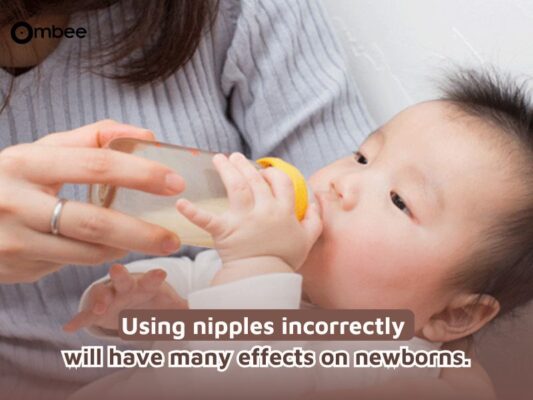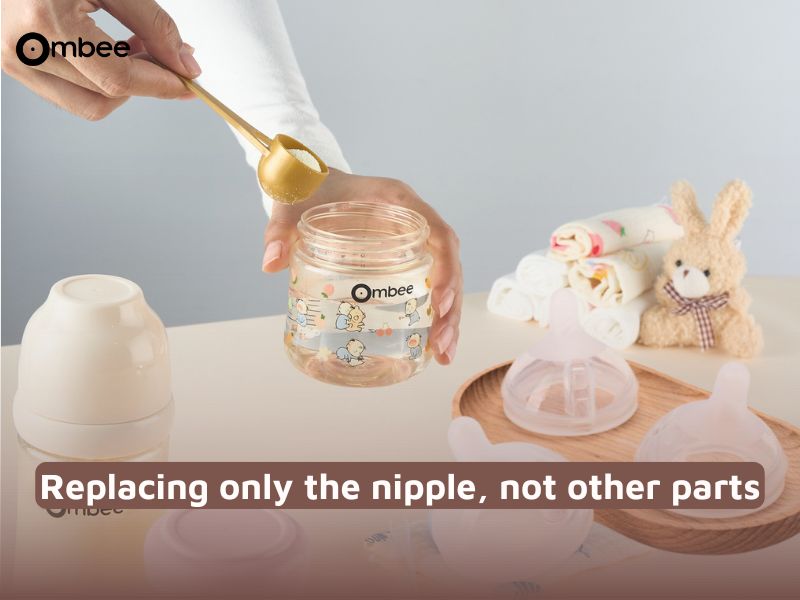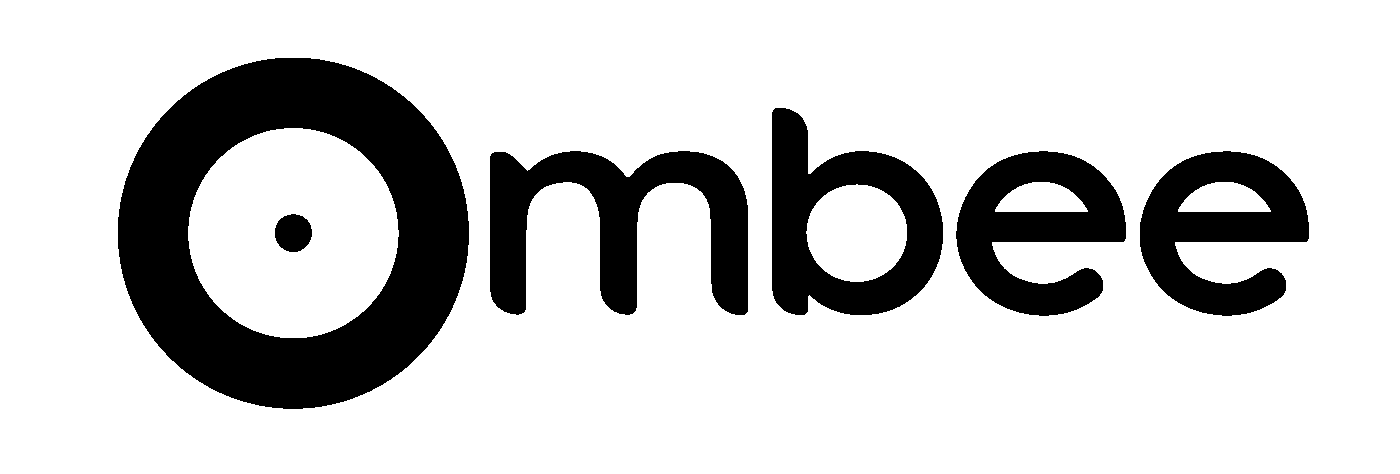8 Common Mistakes When Using Nipples Moms Should Avoid
Baby bottle nipples are a familiar companion for mothers during their parenting journey. Yet not every mom knows how to use them the right way. Many parents accidentally make mistakes when using nipples, causing their babies to feed with difficulty, swallow excess air, or even face long-term oral health issues. So, what are the most common mistakes, and how can you choose and use nipples safely for your baby? Let’s explore these details together so you can feel more confident caring for your little one.
How Improper Nipple Use Affects Babies
Bottle nipples are designed to mimic the natural breast, making feeding easier for babies. However, a few simple mistakes when using nipples can lead to problems such as:
-
Oral health issues: Using nipples that are too small, too large, or for too long may cause misaligned teeth, overbite, or jaw irregularities.
-
Colic and reflux: Nipples without anti-colic valves, or those not replaced in time, can cause babies to swallow too much air, leading to discomfort and vomiting.
-
Incorrect sucking habits: Nipples that are too firm or with the wrong flow speed may cause babies to suck incorrectly, which can affect their ability to breastfeed later.
-
Infections: If not cleaned properly, nipples can harbor bacteria that cause diarrhea or mouth infections.
Even one or two mistakes when using nipples can make a baby fussy, uncomfortable, and sometimes require medical attention.

8 Mistakes When Using Nipples Moms Should Avoid
Many new moms, especially first-time parents, lack experience and may not realize how important proper nipple use is. Below are the eight most common mistakes when using nipples every mom should know:
1. Choosing the Wrong Nipple Size
One of the most frequent mistakes when using nipples is not choosing the right size for your baby’s age. Nipples that are too small force babies to suck harder, while nipples that are too big may cause choking.

2. Not Replacing Nipples Regularly
Some moms save money by letting their babies use the same nipple for many months, or even a year. However, experts recommend replacing nipples every 2–3 months, or sooner if there are signs of wear. Using old nipples is a mistakes when using nipples that allows bacteria to accumulate.
3. Poor Hygiene Before and After Use
Simply rinsing with cold water is not enough. Skipping sterilization is another very common mistakes when using nipples. Since nipples go directly into your baby’s mouth, they must always be sterilized with boiling water or a baby bottle sterilizer.

4. Using the Wrong Feeding Position
During feeding, the nipple should always be filled with milk. If the bottle is tilted incorrectly, babies swallow air while drinking, leading to bloating and fussiness. This small detail is a frequent mistakes when using nipples.
5. Choosing Unsafe Materials
Some parents buy low-quality nipples made of hard plastic or unsafe rubber. This hidden mistakes when using nipples exposes babies to harmful substances like BPA or unpleasant odors. The best choice is medical-grade silicone – soft, safe, and durable.

6. Ignoring Flow Speed
Each stage of a baby’s growth requires a different milk flow. Using the wrong flow speed is a subtle but common mistakes when using nipples, making babies either struggle to drink enough or choke because the flow is too fast.
7. Replacing Only the Nipple, Not Other Parts
Sometimes moms replace just the nipple but forget that other bottle parts like the anti-colic valve or bottle neck also need checking. When parts don’t match, milk may not flow evenly, frustrating the baby. Overlooking this is another mistakes when using nipples.

8. Over-reliance on Nipples Instead of Breastfeeding
For convenience, some moms introduce bottles too early, leading to “nipple confusion,” where babies reject breastfeeding. This last mistakes when using nipples can affect a mother’s milk supply and reduce bonding time between mom and baby.
How to Choose and Use Nipples Correctly
After knowing the common mistakes when using nipples, here are five golden tips to help you avoid them:
-
Pick the right size based on your baby’s age – always follow manufacturer guidelines.
-
Choose safe materials, such as soft medical-grade silicone free from BPA.
-
Replace regularly, every 2–3 months, or sooner if damaged.
-
Clean and sterilize thoroughly after every use.
-
Select trusted brands that have passed safety checks, such as Ombee PPSU bottles with anti-colic nipples designed for each growth stage.
Read more: Ombee milk bottles are officially available at 170+ KidsPlaza stores nationwide
Conclusion
A small nipple may seem like a simple accessory, but it plays a huge role in your baby’s development. By avoiding these mistakes when using nipples, moms can make feeding safer, easier, and healthier. Always choose quality nipples, clean them correctly, and replace them regularly to make your parenting journey smoother and more enjoyable
